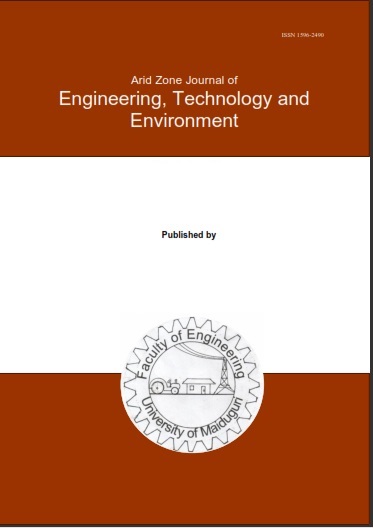Abstract
This research investigates bio-oil production from soursop seed through pyrolysis, with process modelling and optimization conducted using RSM via Box-Benkhen design. Soursop seeds were oven-dried, ground, and sieved into various particle sizes within 1.0 to 6 mm range before undergoing pyrolysis at temperatures between 400 to 600 °C under inert nitrogen gas flow rates between 1.0 to 1.5 L/min. A Box-Behnken design under Response Surface Methodology (RSM) was used to model and optimize the effects of temperature, particle size, and inert gas flow on bio-oil yield. Proximate and ultimate analyses characterized the feedstock, while SEM revealed a porous structure favorable for pyrolysis. Bio-oil was characterized using FTIR and GC-MS to identify key functional groups and fatty acid composition. Proximate analysis showed the seeds had high volatile matter and fixed carbon, indicating good potential for pyrolysis. Ultimate analysis revealed carbon, hydrogen, nitrogen, oxygen, and sulphur contents of 51.29%, 5.90%, 0.50%, 42.30%, and 0.01%, respectively. Scanning Electron Microscopy (SEM) showed a rough, porous structure with oil-like droplets on the surface, which enhanced pyrolysis efficiency by providing a larger reactive surface area and improving devolatilization rates. The experimental design considered temperature, particle size, and gas flow rate combinations, with the bio-oil yield as the response. Results showed that increases in these parameters significantly affected bio-oil production. The maximum observed yield of 33.1% was achieved at 500°C, 6 mm particle size, and 1.0 L/min gas flow. The RSM model showed a high degree of fit with an R² value of 0.9875, adjusted R² of 0.9715, and predicted R² of 0.8007. Optimization predicted a maximum yield of 31.43% under conditions of 461.84°C, 3.84 mm particle size, and 1.02 L/min flow rate, with a desirability of 1.0. Experimental results closely matched these predictions, validating the model. Similarly, FTIR analysis indicates that the predominant monounsaturated fatty acid made up 45.55% of the total fatty acid content, which depicts that the oil belongs to the linoleic acid group. Furthermore, the FTIR analysis reveals that the alkene group contributes to increased reactivity and combustion efficiency, boosts the octane number of the bio-oil, and decreases the boiling point of the oil. Therefore, the FTIR and GC-MS analysis findings confirm that the bio-oil was within ASTM specifications.

This work is licensed under a Creative Commons Attribution-NonCommercial-NoDerivatives 4.0 International License.
Copyright (c) 2025 ARID ZONE JOURNAL OF ENGINEERING, TECHNOLOGY AND ENVIRONMENT

